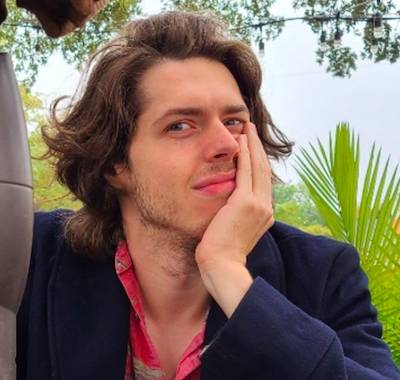Pinstripes and Blood Spatter: Costume Designer Ruth E. Carter on Making Dark Magic in “Sinners”
There’s a burning passion brimming in every frame of Ryan Coogler’s action-packed, thematically rich horror film Sinners. Coogler’s gangbusters original film celebrates Black art from the past, present, and future, which spoke deeply to Academy Award–winning costume designer Ruth E. Carter, now a longtime collaborator with Coogler, winning two Oscars for her sensational work on Coogler’s Black Panther and Black Panther: Wakanda Forever, creating a masterclass in Afrofuturism, weaving together traditional African aesthetics with Wakanda’s bleeding-edge technology.
For Sinners, Carter was tasked with designing an entirely different world—the Mississippi Delta of the 1930s—as she helped Coogler tell the story of twins Smoke and Stack (played by Michael B. Jordan), who return home to Clarksdale (the iconic location where Robert Johnson sold his soul to the devil so he could master his guitar) to open up a juke joint that serves and celebrates the Black community, a proper home for the blues. The twins’ cousin, Preacher Boy (a breakout performance from Miles Caton) is an astonishingly gifted young blues musician, and when his ecstatic music pierces the veil between the past, present, and future, his call is heard by a trio of white minstrel players who also happen to be vampires.
“The whole reason why I am a costume designer is that I feel those same emotions,” Carter told The Credits. “I look at history and look at the pictures of all of these blues greats, look at their vests, cotton shirts, two-tone shoes, and pinstripes and how they traveled around the South and sang their stories. With this setting, how could you not be influenced by all that richness?”
It’s a richness Carter recently spoke to The Credits about when discussing the film’s dynamic ensemble.
When Sammie/Preacher Boy (Miles Caton) plays at the juke joint, we see the past, present, and future dance together in a beautiful sequence. When you read that scene, where did your imagination go?
Thank God we could honor the written word with a visual story, to express it. I learned long ago that my role as a costume designer is an opportunity for visual storytelling. We have a big bonfire where people are just wildly dancing around. Even the movements in that scene are a mystical presence, so the costumes couldn’t just be costumes from African tradition and then hip-hop. It also had to have a layer of synergy to the story and draw you in even further to the mystical elements of this storytelling.
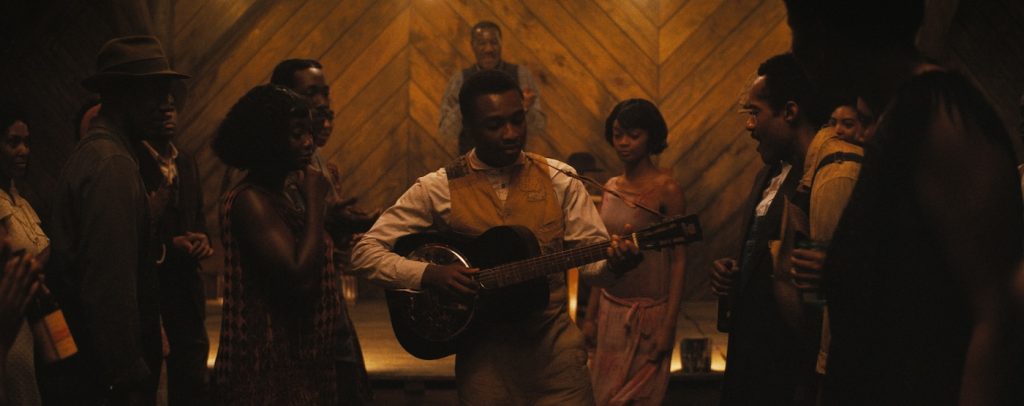
That single transcendent sequence involves Sammie on his 1932 Dobro Cyclops guitar, surrounded by a West African Griot playing a proto banjo, a ’70s guitarist with Jimi Hendrix vibes [played by blues guitarist Eric Gales], a 1980s DJ creating a hip hop beat, West Coast R&B, an African drummer and ancestral dancer, and a modern hip hop dancer—how did you make sure it all fit together?
I worried at first about this dancer and that dancer – how is that going to work together thematically? You know what it means, but you don’t know – in terms of the journey and the editing – how all of that emotion would reach the audience. Even for me, looking at the final edit, it all emerged. And that had to do with color choices, that had to do with actually going out on a limb and being expressive. You see people moving through their clothing, the way it bellows and has a sway, wearing these mysterious masks and these big headdresses…
Your work meshes unbelievably well with how cinematographer Autumn Durald Arkapaw captured that sequence. Most costume designers don’t get to see their work on film anymore, given how often films are shot in digital, especially this size format. What do you think the scope of 70mm and IMAX brings to the costumes?
I have always been a film costume designer. Digital flattened things out. It was a strange perspective, not having the contrast, not having the sultry colors that film can give you. I never really wanted to immerse myself in what digital was able to do; I just wanted to continue to bring in as much detail as I could. And so, when I have the opportunity to work with someone like Autumn – and have film stock and IMAX – it’s revisiting what you always wanted to do and learn the most about, which was how your textures can tell the story and how the cinematographer can capture that richness. So I know I drove my costumers crazy with sweat. Every character has to be sweaty and have some age and weariness because it would be another layer and another character with this film stock.
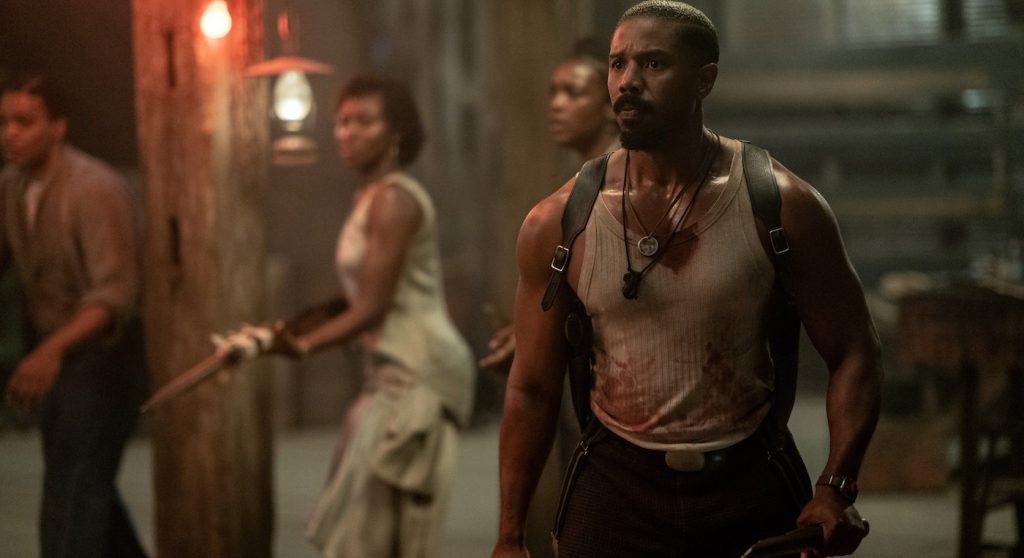
Let’s talk about your costumers in New Orleans. Anyone whose work you want to spotlight?
Oh my God, Mustapha [Mimis], who took care of Michael B. Jordan. We changed him from Smoke to Stack four times a day, and he had to keep track of all of that. Also, the continuity – it was deconstructing a character who started fully dressed and ended up in a tank top, or ended up fully bloodied. Hats off to Mustapha. Melissa [Swidzinski] ran the whole bloody truck, like walking into a plastic wonderland, because she had to keep the continuity of all the blood. It was a splatter that grew and grew as the story went on, so she had to keep a file of what blood happened when and at what transitional point.
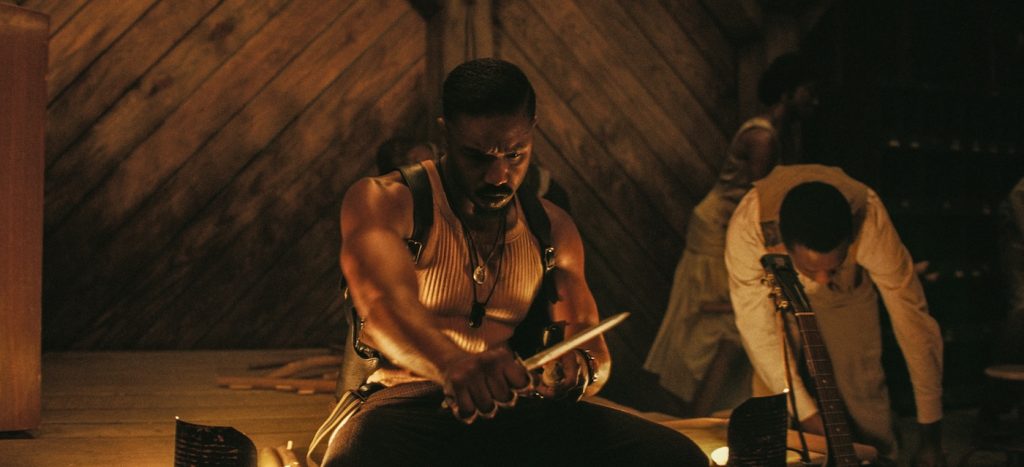
A lot of tracking and multiples on a movie like Sinners, right?
There was a lot of tracking. Sammy and all that he went through – he was dunked in the water. And so, hats off to every set costumer. Caroline Errington was back there sewing all those multiples we needed for all the characters. We had a ton of multiples. Oh my God, I have never done a horror film, and I never knew that this much tracking went on with them.
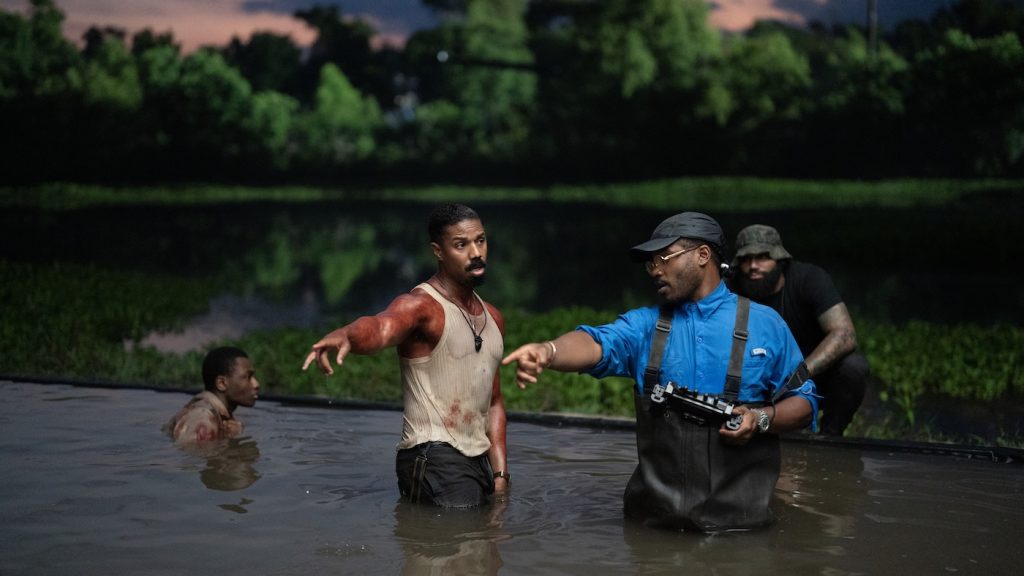
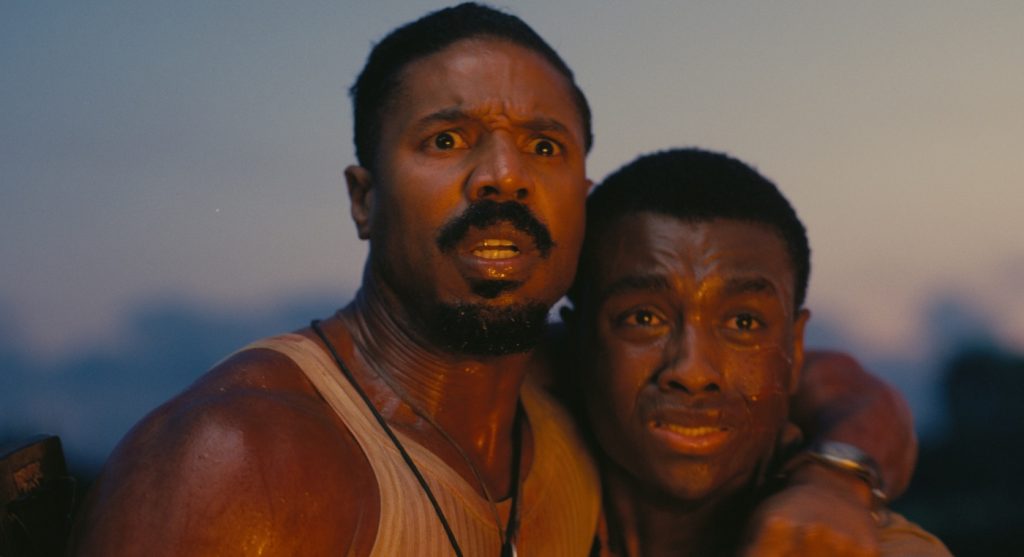
You all did a beautiful job with Smoke and Stack’s suits. What were the subtle differences between their style?
Everybody loves a gangster for some reason. Smoke was this salt-of-the-earth guy who will come out of the grocery store and shoot you in the butt. He’s no frills. No tie. His clothes are a little bit bigger than Stack’s, who is tailored. They both are wearing wool because they’re coming from Chicago, from the North to the South. My hat’s off to [Michael B.] Jordan for wearing that wool all summer long and never complaining once. It was a blessing because it told the story once they got down South and were newly reunited with their Southern brethren, who were in denim and very Norman Rockwell, kind of Southern cotton. Sammy and Delroy [Lindo], their costumes were basically all they had. There were patches, and they were sweaty and lived-in. But Smoke and Stack – fresh as a daisy.
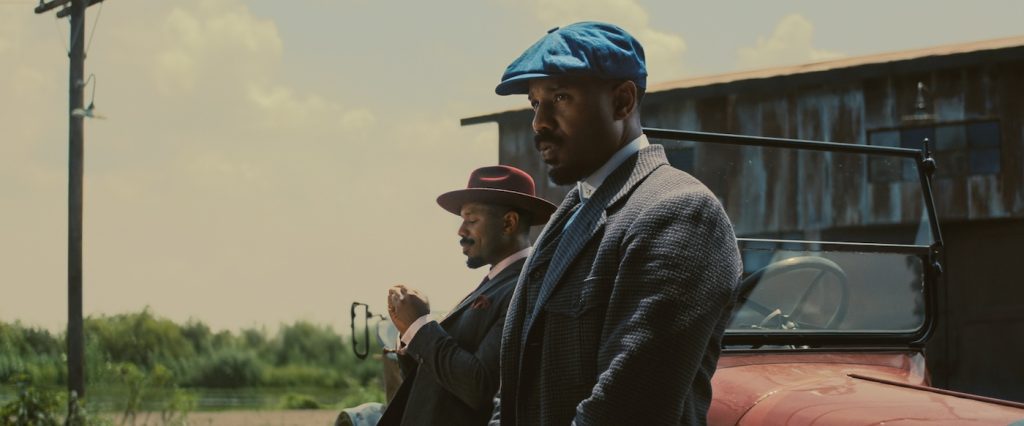
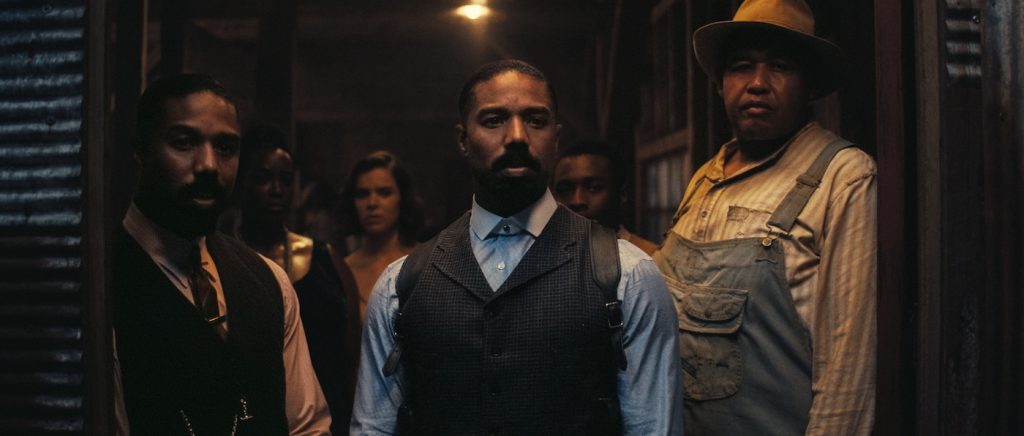
How did you envision Annie (Wunmi Mosaku)? What authentic qualities did you want to bring to her costume?
The issue of spirituality was strong in this film. Annie is the spiritual leader of the community – and it is a small sharecroppers’ community – but she has her little place. The Haint Blue that she wears is an old Southern traditional blue that is supposed to ward off spirits. We kept her in those tones. When we first meet her, she has multiple layers you’re wondering about. You see a fringe, you see a mojo bag. You see she’s got a chatelaine. She’s carrying the things to work her magic.
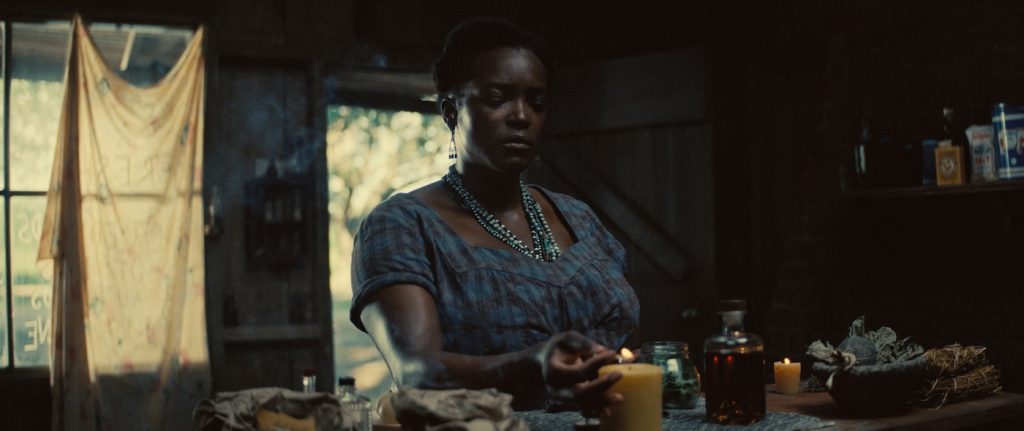
How’d that first fitting with Wunmi go?
It was really nice to have Wunmi come to the fitting with knowledge of how she’s going to play the character. She was interested in seeing all the images we had on the walls, of hoodoo worshipers, women who played these roles in cinema, and other mysterious characters with great-looking costumes. We did the spiritual beads – the prayer beads, we called them. She wore a feather headband and a little feather in her hair. She brought them to life with her wonderful portrayal of the character.
What you and Ryan Coogler do so well here is that every character in that juke joint has a story. How did you approach costuming not only the main characters, but all the folks who come to the Juke Joint for a good time, and end up dealing with vampires?
I fall in love with everybody’s costume. It’s not just the actors – it’s background people too. They’re as much a part of this story as our main actors. I give out things like toothpicks. I’m like, “Brother, I think you would be standing here with a toothpick in your mouth. That’s a player’s look.” I go to props and get a whole bunch of toothpicks. And then the next day he’s like, “Hey, can I get a toothpick?” For me, it’s bringing things to life. I work with a strong team, am hands-on, and always watch what’s happening in my group. Pictures are shared – folders that I check all the time – and I tell them what we are going to add and take away. It was important to be authentic. Authenticity is what drives me.
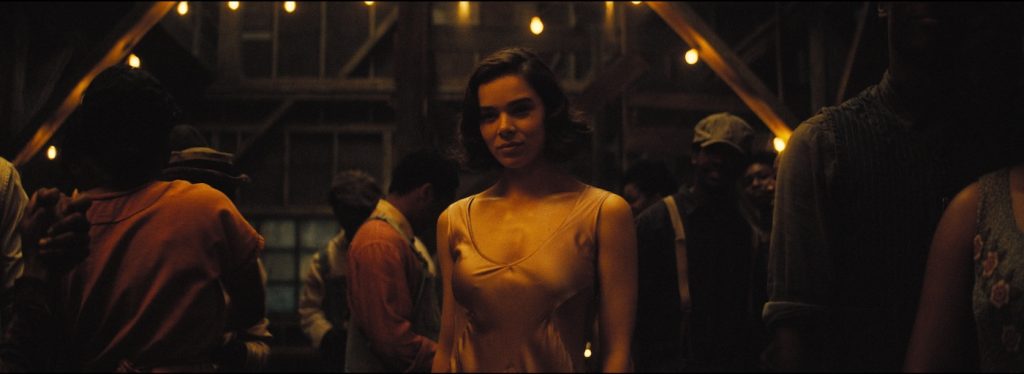
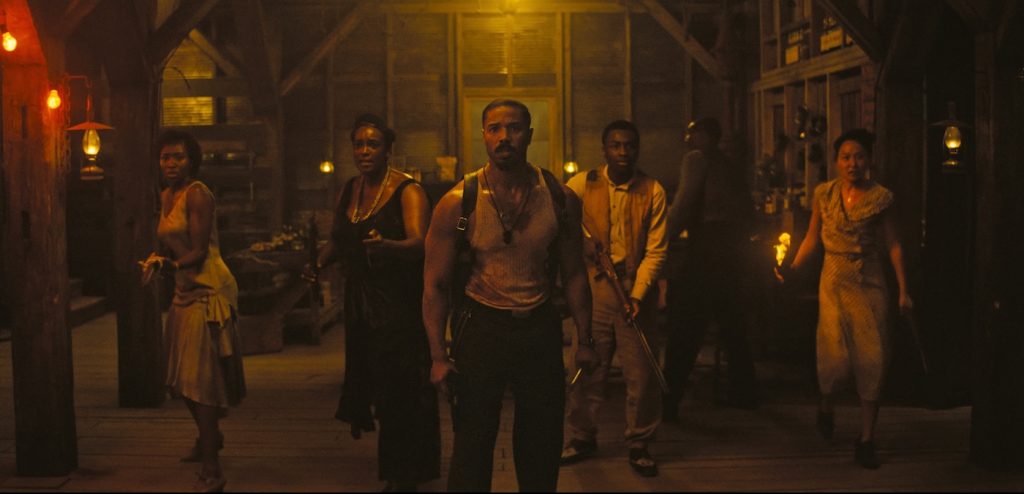
Sinners is in theaters now.
For more on Sinners, check out these stories:
Featured image: Caption: MICHAEL B. JORDAN as Smoke and as Stack, in Warner Bros. Pictures’ “SINNERS,” a Warner Bros. Pictures release. Photo Credit: Courtesy of Warner Bros. Pictures


